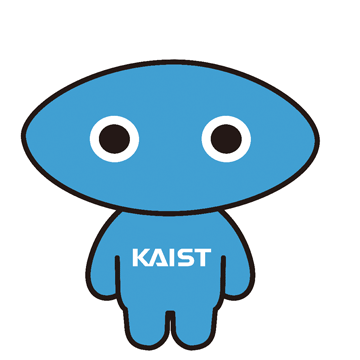Neural Network Editing Study
Study of network editing.
This post is a personal study of editing neural networks
Introduction
This post is about my practice on the mathematical formulation of editing. This post covers maths in [📃 Rewriting a deep generative model]
- [📃 Editing a classifier by rewriting its prediction rules]
- [📃 Locating and editing factual associations in GPT, Factual GPT]
- [📃 Unified Concept Editing in Diffusion Models]
Keywords Summary
- 🔖 model rewriting : task which aims to add, remove, and alter the semantic and physical rules of a pretrained deep network.
- 🔖 linear associative memory : relationship between two values are defined as linear transform. input as key and the output as value.
Example
We have initial weight $w_0$ which is further rewritten with another weights $\Delta$ by
- $w_0 + \Delta_1$ : remove text in image
- $w_0 + \Delta_1 + \Delta_2$ : add people
- $w_0 + \Delta_1 + \Delta_2 + \Delta_3$ : replace tower by tower
Formulation of Editing
A pre-trained generator $G(z;\theta_0)$ with weights $\theta_0$ and input latent $z$, generate images $x_i = G(z_i;\theta_0)$ is produced by a latent code $z_i$. As we want to edit $x_i$ to desired image \(x_i^*\), we would update weights $\theta_1$ that change a computational rule to match $x_i^* \approx G(z_i; \theta_1)$ with regularization
Equation 2 ensures little difference between two operations $(G(z;\theta_0)$ and $G(z; \theta)$ and Equation 3 ensures the generated image with $z_i$ is the desired image \(x_i^*\).
However, this technique requires the modification of all weight $\theta$ and the novel idea proposed by Bau is the modification of only one layer
Let $v = f_l(k;W_0)$ denote the computation of layer $L$ with weights $W_0$. For each exemplar latent $z_i$, The layer produce features \(k_i^*\) and \(v_i^* = f_l(k_i^*;W_0)\) Here, \(v_i^*\) is the latent for the desired image \(x_i^*\) which could be obtained via such as GAN inversion. The objective Equation 1 becomes
The editing of generative model is done by learning weights to match \(k_i^*\) (given input from \(z_i\)) and \(v_i^*\) (desired feature for \(x_i^*\)).
In conclusion, modifying weights in a layer to map $k_i^* \rightarrow v_i^*$.
Weight Matrix Update
Matrix $W$ can be viewed as an association memory. The term association means the memory determines the association of two values, inputs and outputs. A set of key-value pairs ${ (k_i, v_i) }$ has the following association with memory $W$.
\[v_i \approx W k_i\]If the keys are (1) mutually orthogonal and (2) error-free, then the memory can be recovered in error-free manner.
With this matrix, we have the following property
The below example shows the editing of convolutional layer which produces \(v = W_\mathrm{reshaped} k_\mathrm{reshaped}\).
- Weight $W$ : convolutional weight (
256 x 512 x 3 x 3dim / reshaped :2304 x 512) - Key $k$ : a single feature vector matches the similar location semantic (
512dim ) - Value $v$ : rendered shape semantic (
256 x 3 x 3dim / reshaped:2304)
Nonorthogonal keys
Orthogonal keys have at most $N$ number of keys where $N$ is length of columns. In other words, only $N$ number of semantic keys are possible. However, the semantic space could have more number of semantic keys and nonorthogonal encode more key-value pairs with 🌟superpositions.
Let $N’$ be the number of nonorthogonal keys ${k_i}$. We choose $W_0$ to minimize error:
For the simplification of notations, we can stack the key and values columns to form matrices
where $K^+$ is the pseudo-inverse of $K$ [see wiki].
Insert New Value
It is known that Equation 15 with constraint Equation 16 can be solved exactly as \(W_1KK^\top = VK^\top + \Lambda k_*^\top\) where \(\Lambda \in \mathbb{R}^{m}\) is determined to satisfy the constraint in Equation 16.
As $\Lambda$ is a vector and $d$ is also a vector, the modification updates $W_0$ to $W_1$ with rank one matrix. This is why editing with this method is called Rank One Model Editing (ROME).
Nonlinear Neural Layer
The nonlinear means that the value is not just the output of a matrix but the non-linearly modified value with activations such as ReLU and Tanh. The authors also generated the insertion as follows.
The key direction is the multiplication of the inverse of covariance matrix $C^{-1}$ and the desired key $k_*$.
The component $\Lambda$ for the row space is found by the optimization process.
The update weight is same with Equation 20.
There are situations where more number of values should be updated at once. More generalized number of modification is the matrix version of finding components.
where \(D_S = [d_1 \vert d_2 \vert \cdots \vert d_S]\).
Editing Classifier
I summarized briefly the core mechanism of [📃 Editing a classifier by rewriting its prediction rules]
Method
Given an original image $x$, the original output $y$ is produced by the classifier and the internal representation value $v$ which may have semantic meaning. This value $v$ is the representation that already mapped to the correct label $y$.
Now assume that we have modified input $x’$ and we want to map it to the value $v$ to produce label $y$. To do this, the linear association memory is applied to map the new key to desired the value
For example, the original car image has semantic wheel which is mapped to the label Car or Bicycle and leaves the value $v^*$ from the wheel concept. When we want edit the wheel concept to wooden wheel, but preserves the prediction as Car and Bicycle, the new key wooden wheel needs to be mapped to the value $v^*$.
Why We Edit Association (Key $\rightarrow$ Value)?
Because there is spurious correlation between backgrounds in classification, the prediction could be biased. For example, snow concept should be mapped to the value of road to be invariant to the backgrounds.
